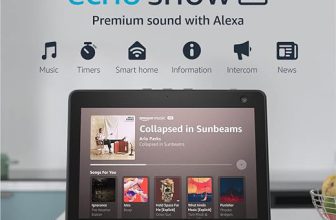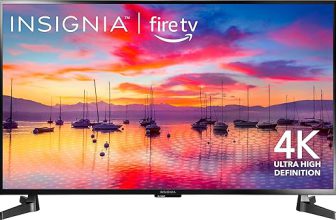
This step-by-step guide offers practical tips for efficiently managing storage space on your mobile device, enhancing its performance and usability. It covers essential strategies such as identifying and deleting unnecessary files, utilizing cloud storage solutions, organizing apps and media, and regularly checking storage usage. By following these steps, you can effectively free up space, streamline file organization, and ensure your device operates smoothly, allowing for a better overall user experience.



Check Available Storage
Check how much storage space is currently available on your mobile device. Open the Settings app, then locate and tap on Storage. This section provides a comprehensive breakdown of both used and free space, helping you understand how your storage is allocated.
- Observe the total storage capacity at the top of the screen.
- Note the amount of space used, which may be categorized by apps, photos, videos, and other content.
- Look for the section that indicates available storage, showing how much space you have left for new apps, files, or media.
For example, if you see that you have 10 GB of used space and 2 GB available, you may want to consider deleting unused apps or large files to free up more space.
![SanDisk 256GB Ultra microSDXC UHS-I Memory Card with Adapter - Up to 150MB/s, C10, U1, Full HD, A1, MicroSD Card - SDSQUAC-256G-GN6MA [New Version]](https://m.media-amazon.com/images/I/61lQ5n-udzL._SS520_.jpg)


Delete Unused Apps
Review the applications installed on your device. Check for any apps that you no longer use or need. Follow these steps:
- Long-press the app icon: Find the app you want to remove on your home screen. Press and hold the icon until a menu appears.
- Choose ‘Uninstall’: In the menu, select the ‘Uninstall’ option. Confirm the action if prompted.
Alternatively, you can uninstall apps through the settings:
- Open ‘Settings’: Navigate to the settings menu on your device.
- Select ‘Apps’: Look for the ‘Apps’ section, which lists all installed applications.
- Choose the app: Scroll through the list and tap on the app you wish to remove.
- Tap ‘Uninstall’: Select the ‘Uninstall’ button and confirm your choice.
Repeat these steps for any other unused applications to free up space and keep your device organized.
Clear Cache and Data
Apps often store cache and data that can take up significant space on your device. Managing this storage is essential for optimal performance.
- Open the Settings app on your device.
- Scroll down and select Apps.
- Browse through the list of installed apps and select the app you want to manage.
- Look for the options labeled Clear Cache and Clear Data.
- Tap Clear Cache to remove temporary files that may slow down the app.
- If you want to reset the app to its original state, tap Clear Data. Note that this may delete any saved settings or login information.
Repeat these steps for other non-critical apps to free up storage space effectively.
Manage Photos and Videos
Consider backing up your photos and videos regularly to free up storage space on your mobile device. Choose a reliable cloud storage service or an external device, such as an external hard drive or USB flash drive. Sign up or log in to your preferred cloud service, and install the necessary app on your mobile device if required. Upload your photos and videos by selecting the files you want to back up, then follow the app’s prompts to complete the upload process.
After confirming that your files are securely backed up, delete the originals from your mobile device. Navigate to your photo and video gallery, select the items you want to remove, and tap on the delete option. This action will help you reclaim valuable storage space and keep your device running smoothly. Regularly repeat this process to maintain optimal storage management.
Use Storage Management Tools
Access the built-in storage management tools on your device by navigating to the ‘Settings’ menu. Look for the option labeled ‘Storage’ or ‘Storage Management.’ Tap on it to open a detailed view of your storage usage. Here, you will find information about how much space is used and how much is available. Identify large files by selecting the section that displays your most significant storage consumers, often categorized by apps, images, videos, and documents.
Follow prompts that may suggest files for deletion based on their size or usage frequency. For instance, if you see a list of large videos occupying significant space, you can select them and choose to delete or move them to an external drive or cloud storage. Similarly, you might find recommendations for unused apps; consider removing those that you haven’t accessed in a while. This process not only frees up space but also helps maintain the overall efficiency of your device.
Transfer Files to External Storage
Identify large files that consume significant space on your device, such as documents, music, or videos. Connect your external storage solution, like an SD card or USB drive, to your device. Open the file manager app on your device and navigate to the location of the files you want to transfer.
Select the files you wish to move. Use the “Copy” or “Cut” option, depending on whether you want to keep a copy on your device. Navigate to your external storage location in the file manager and select “Paste” to transfer the files. Wait for the transfer process to complete before safely ejecting the external storage device from your device.
Review Downloads Folder
Open your ‘Downloads’ folder regularly to check for files you no longer need. This folder often accumulates a variety of files over time, including documents, images, and installers. Removing unnecessary items can free up significant space on your device.
- Scan through the files displayed in the folder.
- Identify and select files that are outdated or irrelevant.
- Right-click on the selected files and choose ‘Delete’ or press the ‘Delete’ key on your keyboard.
- Empty your ‘Recycle Bin’ afterward to permanently remove these files and reclaim storage.
Make it a habit to perform this task weekly or monthly, ensuring your system runs smoothly and efficiently.
Maximizing Efficiency and Accessibility
In conclusion, effectively managing storage space on my mobile device is crucial for maintaining optimal performance and ensuring I have room for the apps and files that matter most. By implementing the strategies discussed, I can keep my device running smoothly and avoid the frustration of running out of space. Regularly reviewing my storage usage and making informed decisions will help me maintain an organized and efficient mobile experience.
Essential Items Needed








Does anyone have a specific external storage recommendation? I’ve heard about SanDisk flash drives that work with iPhones, but are there better options? 🤔
SanDisk drives are a solid choice! For iPhones, you might also consider the Leef iBridge, which is super handy and flexible. Make sure to check the compatibility with your device before you buy!
After implementing these tips, I can finally update my apps without running into storage issues! It’s like my phone got a new lease on life. Thanks for the clear steps, everyone should check this out! 😄
That’s fantastic to hear! Being able to update apps without worry is such a relief. Thanks for spreading the word, and happy storage managing!
I tried following the steps, but when I went to clear the cache, my phone froze up! Anyone else have this issue? I have a Samsung Galaxy S21, and now I’m worried about messing something up. Help! 😩
Sorry to hear about the freezing! Sometimes, clearing cache can take a bit longer on certain devices. Try restarting your phone and then attempting to clear the cache again. If it continues, let us know, and we can troubleshoot further!
I followed this guide last week and managed to clear up 10GB on my iPhone! I had no idea how many duplicate photos I had. I used Google Photos to back them up and then cleared them from my phone. Such a relief! Thanks for the tips! 🎉
That’s awesome! Google Photos is a great tool for backing up and managing photos. It’s incredible how those duplicates can sneak up on us. Thanks for sharing your success!
Wow, this guide was super helpful! I didn’t realize how much space my old games were taking up. I deleted a few and freed up nearly 5GB! Now my phone runs so much smoother. Definitely going to keep an eye on my storage more often! Thanks for the tips! 😊
Thanks for sharing your experience! It’s amazing how quickly space can add up with games. Keeping your phone decluttered makes a big difference. Glad to hear you’re enjoying a smoother experience!